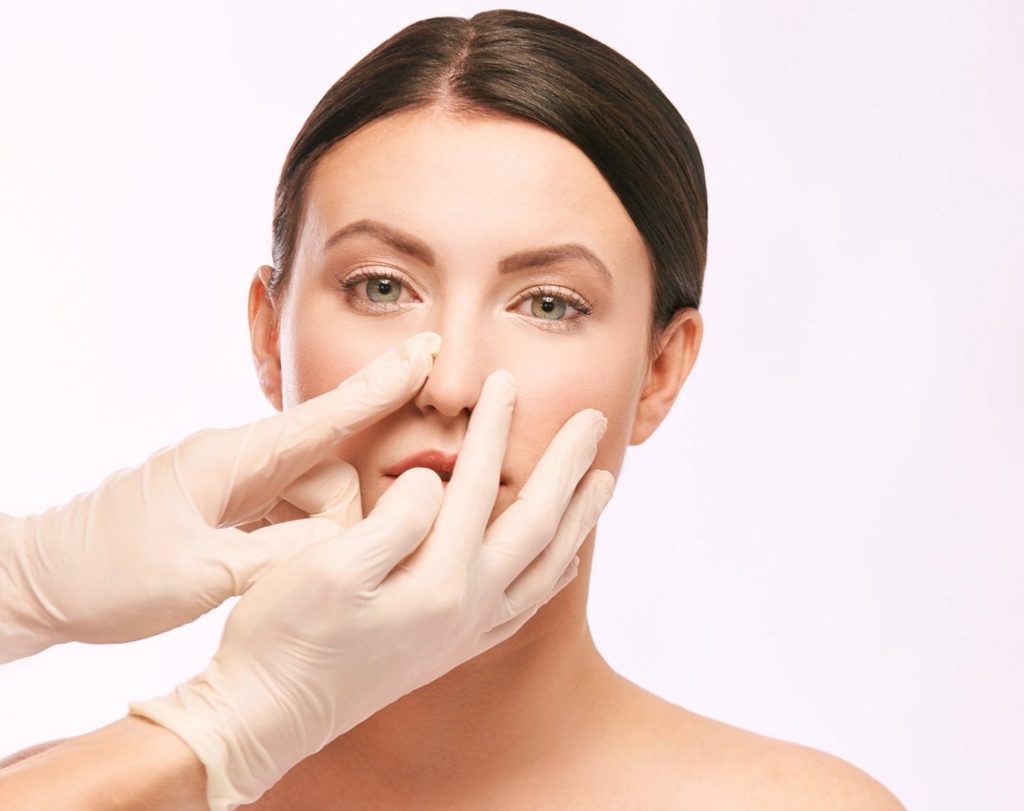Rhinoplasty to operacja, która zmienia kształt nosa. Korekta nosa jest wykonywana głównie
w celu zmiany wyglądu nosa i poprawy oddychania. Operacja może być wykonana na
kości, chrząstce i skórze nosa. Istotnym jest, by skonsultować się z wykwalifikowanym
chirurgiem, czy plastyka nosa jest dla nas odpowiednia i jakie efekty można osiągnąć.
Najpierw lekarz dokona dokładnej oceny kształtu oraz budowy nosa. Podczas konsultacji
zostanie również omówiony efekt pooperacyjny. Lekarz weźmie pod uwagę preferencje
pacjenta i przedstawi realny efekt końcowy.
Skontaktuj się z nami, jeśli chcesz dowiedzieć się więcej o zabiegu i procesie gojenia.

A rhinoplasty procedure (nose job) is a surgery that alters the shape of the nose. Rhinoplasty is mainly performed to change the nose’s look and improve breathing. Rhinoplasty can change bone, cartilage, and skin. Consult a qualified surgeon about whether rhinoplasty is right for you and what you can achieve. The results of nose surgery are permanent. Your nose will be with you for a lifetime, so it is crucial to choose a qualified doctor you can trust to deliver the desired results.

Procedure
When recommending rhinoplasty, the surgeon will consider your other facial features, the skin on your nose, and what you would like to change. If you opt for surgery, your surgeon will develop a customised plan and inform you about the risks and recovery time in Rhinoplasty surgery. Nose surgery varies from individual to individual. A surgeon’s exact technique during the procedure depends on a patient’s anatomy and desired changes.
The standard techniques used by the surgeons:
Open Rhinoplasty- A small cut is made under the nasal tip, between the nostrils. This technique allows the cosmetic surgeon more complete access to nasal structures, where the surgeon sculpts the nose into the desired shape.
Closed Rhinoplasty- The incisions are made inside the nostril. This procedure is used for patients who need minor adjustments to the nasal structures to get the desired improvements.
Non-Surgical Rhinoplasty- The expert surgeon can help smooth out bumps and reshape the nasal tip by injecting a filler at specific points in the nose. Though the results are temporary, this approach is cost-effective.
The standard techniques used by the surgeons:
Open Rhinoplasty- A small cut is made under the nasal tip, between the nostrils. This technique allows the cosmetic surgeon more complete access to nasal structures, where the surgeon sculpts the nose into the desired shape.
Closed Rhinoplasty- The incisions are made inside the nostril. This procedure is used for patients who need minor adjustments to the nasal structures to get the desired improvements.
Non-Surgical Rhinoplasty- The expert surgeon can help smooth out bumps and reshape the nasal tip by injecting a filler at specific points in the nose. Though the results are temporary, this approach is cost-effective.
Aftercare
After the Rhinoplasty surgery, you need to rest in bed to reduce bleeding and swelling. Your nose may be congested because of swelling. The internal dressings usually remain in place for seven days after surgery. Your doctor also tapes a splint to your nose for support. It’s generally in place for about one week. Slight bleeding and mucus drainage are common a few days after the surgery or after dressing removal

